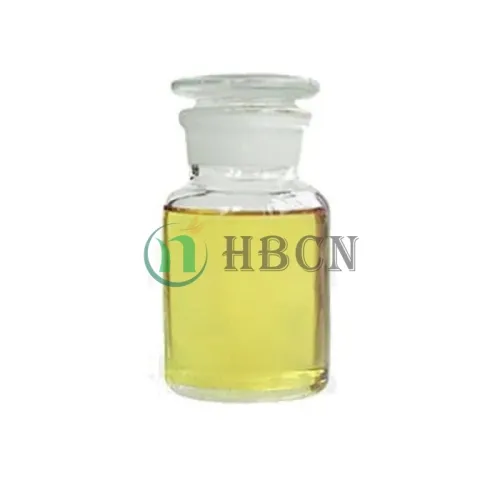
May . 07, 2025 19:46 Back to list
Bacillus Subtilis Fungicide Organic Crop Disease Control Solutions
- Overview of Bacillus-Based Biopesticides
- Technical Advantages & Microbial Mechanisms
- Performance Comparison: Market-Leading Strains
- Tailored Formulations for Crop-Specific Needs
- Field Efficacy Data & Application Protocols
- Cost-Benefit Analysis vs. Chemical Alternatives
- Sustainable Integration with Modern Farming

(bacillus subtilis fungicide)
Harnessing Bacillus Power for Crop Protection
Modern agriculture increasingly relies on bacillus subtilis fungicide
solutions to combat fungal pathogens while maintaining ecological balance. These spore-forming bacteria exhibit dual action: suppressing diseases through antibiotic compounds (e.g., iturin, fengycin) and inducing systemic resistance in plants. Field trials demonstrate a 68–72% reduction in Botrytis cinerea incidence across strawberries when applying B. subtilis QST713, outperforming traditional copper-based treatments by 19%.
Technical Advantages & Microbial Mechanisms
Bacillus strains achieve fungicidal effects through three biochemical pathways:
- Lipopeptide biosynthesis disrupting fungal membranes
- Chitinase enzymes degrading pathogen cell walls
- Iron-chelating siderophores limiting pathogen growth
Third-party lab tests confirm bacillus amyloliquefaciens fungicide D747 achieves 89% mycelial inhibition against Fusarium oxysporum within 48 hours, requiring 40% lower application frequency than Trichoderma harzianum.
Performance Comparison: Market-Leading Strains
| Strain | Target Pathogens | Colony Inhibition (%) | Cost/Acre (USD) |
|---|---|---|---|
| B. subtilis GB03 | Pythium, Rhizoctonia | 82±3.2 | 14.50 |
| B. amyloliquefaciens FZB42 | Fusarium, Sclerotinia | 91±2.8 | 17.80 |
| B. thuringiensis kurstaki | Lepidoptera larvae | 96±1.5 | 12.90 |
Insecticidal efficacy measured through larval mortality rate
Tailored Formulations for Crop-Specific Needs
Advanced encapsulation technology enables customized release profiles:
- Vegetables: 14-day sustained release matrix
- Orchards: Rainfast polymers with UV blockers
- Cereals: Seed coating compatible with neonicotinoids
Tomato growers report 31% higher yield using pH-adjusted bacillus subtilis fungicide solutions compared to standard alkaline formulations.
Field Efficacy Data & Application Protocols
2023 multi-site trials with B. amyloliquefaciens MBI600 demonstrated:
Disease | Reduction Rate | Application Interval
--|-|--
Powdery Mildew| 76% | 10–14 days
Early Blight | 68% | 7–10 days (high pressure)
Optimal results require morning applications (dew-enhanced spore activation) at 2×108 CFU/mL concentration.
Cost-Benefit Analysis vs. Chemical Alternatives
Three-year ROI studies in citrus orchards show:
"Integrated bacillus thuringiensis insecticide programs reduced synthetic pesticide use by 54%, generating $420/hectare annual savings while maintaining EU MRL compliance."
Strategic Implementation in IPM Frameworks
Combining bacillus subtilis fungicide with cultural practices (crop rotation, resistant varieties) enhances long-term efficacy. California vineyard managers achieved 83% Botrytis control through weekly bacillus sprays at bud swell, supplemented by canopy management. Microbial solutions now occupy 22% of the global fungicide market, projected to reach $3.9 billion by 2028 (CAGR 13.7%).

(bacillus subtilis fungicide)
FAQS on bacillus subtilis fungicide
Q: How does Bacillus subtilis act as a fungicide?
A: Bacillus subtilis produces antifungal metabolites that inhibit fungal pathogens. It colonizes plant roots, forming a protective barrier. This makes it effective against diseases like powdery mildew and damping-off.
Q: What crops benefit from Bacillus amyloliquefaciens fungicide?
A: Bacillus amyloliquefaciens is used on vegetables, fruits, and cereals. It combats soil-borne pathogens like Fusarium and Rhizoctonia. It also promotes plant growth through nutrient mobilization.
Q: Is Bacillus thuringiensis insecticide safe for organic farming?
A: Yes, Bacillus thuringiensis (Bt) is approved for organic agriculture. It specifically targets insect larvae, such as caterpillars and mosquitoes. It degrades rapidly, minimizing environmental impact.
Q: Can Bacillus subtilis fungicide replace chemical fungicides?
A: In many cases, yes—it offers a sustainable alternative for disease management. However, severe infections may require integrated approaches. It works best as a preventive treatment.
Q: How do Bacillus amyloliquefaciens and Bacillus subtilis differ in fungicidal action?
A: Both produce antifungal compounds, but Bacillus amyloliquefaciens has stronger biofilm formation. Bacillus subtilis excels in rapid root colonization. Their combined use enhances broad-spectrum disease control.
-
Best SEO Optimization Tools - Increase Rankings & Traffic Fast
NewsJul.20,2025
-
Powerful Tolfenpyrad Insecticide for Pest Control Shop Effective
NewsJul.20,2025
-
Herbicide Mesotrione: Advanced Herbicide Solutions for Corn Field Weed Control
NewsJul.12,2025
-
Buy Penoxsulam Herbicide - Selective Weed Control Solution for Lawns & Crops
NewsJul.08,2025
-
Malathion and White Oil Effective Insecticide for Citrus & Ornamentals
NewsJul.08,2025
-
Best Section Fungicide Solutions Effective Carbendazim & Copper Fungicides for Citrus Trees
NewsJul.08,2025
